 |
Picks is a monthly sampling of Japan's art scene, offering short reviews of exhibitions at museums and galleries in recent weeks, with an emphasis on contemporary art by young artists. |
 |
 |
 |
1 September 2009 |
 |
| 1 | 2 | |
 |
|
 |
 |
|
|
 |
 |
| Risaku Suzuki: WHITE |
| 28 May - 11 July 2009 |
Gallery Koyanagi
(Tokyo) |
 |
| The inspiration for this exhibit of photographs on the theme of snow is apparently a book of essays on the subject by the physicist Ukichiro Nakaya, known for his research on snow crystals. Suzuki's tightly framed close-ups of snowflakes are at once heartwarming and exquisitely, crisply cold. The series is truly a crystallization of the artist's reverence for nature and his sharp powers of observation. |
|
|
 |
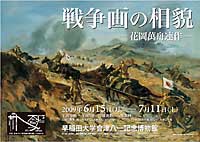 |
 |
| Battle Scenes: The Works of Manshu Hanaoka |
| 15 June - 11 July 2009 |
Aizu Museum, Waseda University
(Tokyo) |
 |
| Two years ago, Waseda's Aizu Museum received a gift of 57 war paintings by Manshu Hanaoka; this show introduces about half of the collection. Hanaoka spent many years in China, where he allegedly served as a spy for the Japanese Army. Yet his paintings were not Army-commissioned, and indeed he seems not to have cared about creating a polished product. Was he a Sunday war painter of sorts? The man himself seems more intriguing than his works. |
|
|
|
|

|
 |
 |
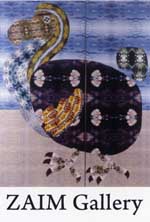 |
|
Noriaki Imai: Murals from Photographs |
| 2 - 12 July 2009 |
ZAIM
(Tokyo)
|
 |
Imai creates photo collages -- an ocean made up of many seascapes, mountains formed from piles of mountain views -- which he mounts directly on the gallery wall. Particularly captivating is his image of a dodo, the extinct bird, composed of kaleidoscopically-arranged scenes from Reunion Island, one of the dodo's habitats. One hopes this picture, at least, will be preserved.
|
|
|
 |
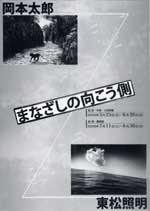 |
|
|
Taro Okamoto and Shomei Tomatsu: Beyond the Gaze |
Okinawa and Kudaka islands:
8 May - 7 June 2009
Outlying islands:
11 July - 30 August 2009 |
|
Okinawa Prefectural Museum & Art Museum
(Okinawa) |
 |
The second half of this photographic exhibit, devoted to the more isolated islands of the Okinawa archipelago, is small (only 18 works by each artist) but fraught with tension. Okamoto, best known for his paintings and sculptures, visited Okinawa in 1959, while journalistic photographer Tomatsu actually lived there in the early seventies. But the show highlights more similarities than differences in their approaches: both sought to pierce through layers of surface reality to extract the essence of their subjects.
|
|
|
|
|
|
|
|

|
 |
 |
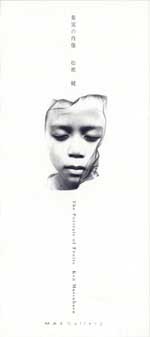 |
 |
| Ken Matsubara: The Portrait of Fruits |
| 20 June - 18 July 2009 |
MA2 Gallery
(Tokyo) |
 |
While pursuing his day job as an advertising and fashion photographer, Matsubara has also built up an oeuvre of meticulously composed still-life works. In a departure for him, this series consists of portraits of children in Vietnam. Though clearly an attempt to chronicle the tragic aftermath of the Vietnam War, the images are in no way a didactic denunciation of the war. Still, they convey the artist's determination to prevent its memory from fading, to bind the past to the present.
|
|
|
 |
 |
| Kyoto Studies: City of the Avant-Garde - Modernism in Kyoto 1895-1930 |
| 9 June - 20 July 2009 |
The National Museum of Modern Art, Kyoto
(Kyoto) |
 |
| Long recognized as Japan's cultural capital, Kyoto is currently the trendy subject of "Kyoto studies." This show, which positions the city as modern Japan's avant-garde capital as well, focuses on the impacts of the National Industrial Exposition held there in 1895, the German chemist Gottfried Wagener who championed Kyoto crafts during the Meiji era, artists like Kiyoteru Kuroda, the first Japanese to paint nudes, and the film industry founded by Shozo Makino, "father of Japanese film." These varied angles of attack provide a well-rounded view of Kyoto in its heyday as a bastion of "Meiji Modernism." |
|

|
 |
 |
 |
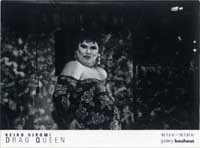 |
|
| Keiko Hiromi: DRAG QUEEN |
| 3 - 31 July 2009 |
gallery bauhaus
(Tokyo) |
 |
| Hiromi's high-contrast monochrome prints maintain a cool distance from her subjects, skillfully exploiting the perspective of a wide-angle (16 to 42 mm) lens and depth of field to vividly yet objectively portray the crowded jostle of flesh and objects in the drag queens' dressing room. Hiromi's thorough study of American-style documentary photo methodology is evident in her work. |
|
|
|
|
 |
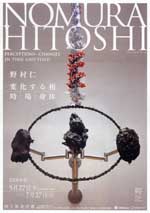 |
 |
| Hitoshi Nomura: Perceptions - Changes in Time and Field |
| 27 May - 27 July 2009 |
The National Art Center, Tokyo
(Tokyo) |
 |
| Any artwork, however avant-garde, is bound to look like some sort of lab specimen when displayed in the tidy, white, cubic spaces of Tokyo's National Art Center. Nomura's "scientific" works are no exception -- but this may be a strength, not a weakness of this retrospective, which includes photographs, videos and installations that amply reflect the artist's fascination with natural phenomena. It might, in fact, be more interesting to see Nomura's work in a science or natural history museum. |
|
|
|
|
|
|
 |
 |
| Jun Yamazoe |
| 30 June - 12 July 2009 |
Art Space Niji
(Kyoto) |
 |
| The sculptor says, "I am looking for a certain scent that emerges when I carve stone." And indeed, all of Yamazoe's works, including the new ones introduced here, exude just that kind of quiet force. His sculptures seem composed of layers of the time spent facing these large chunks of rock as well as traces of the struggle of artist with object. They are at once tranquil and weighty, possessed of a beauty that does not flatter the eye of the beholder. |
|
 |
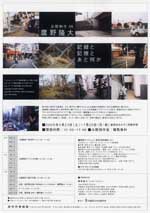 |
 |
Ryudai Takano: Record, Memory and Something Else
|
| 23 May - 20 July 2009 |
Fuchu Art Museum
(Tokyo) |
 |
In the Fuchu Art Museum's ongoing Open Studio series, artists occupy a room in the museum where the public can see them at work. During his residency, Takano shot monochrome photos of the Fuchu area and immediately developed and printed them in a darkroom set up in the exhibition space. Takano's growth as a photographer is evident in his increasingly skillful blending of a rigorous compositional logic with a gentle receptivity to his subject matter.
|
|
|
|
|
 |
|